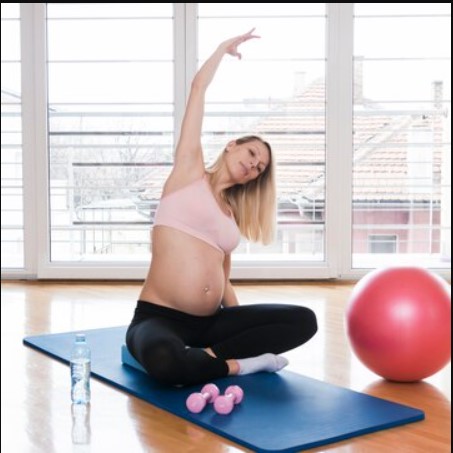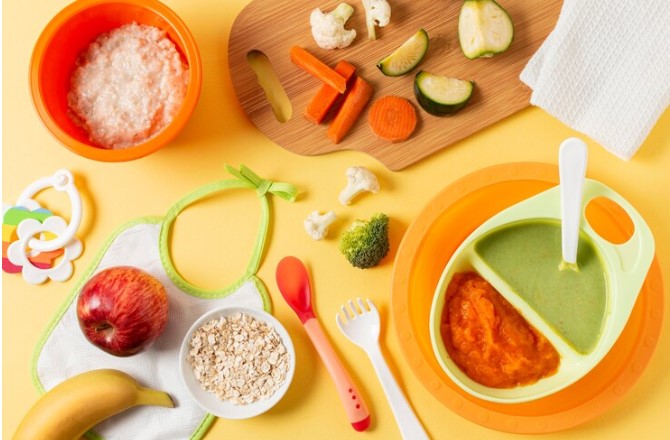Yoga is more than just a physical exercise; it is a holistic practice that nurtures both body and mind. By harmonizing breath with movement, yoga unlocks hidden potential within us. It promotes mental clarity, emotional resilience, and physical strength. Through its ancient wisdom, yoga offers us the tools to become more flexible, not only in our bodies but also in our lives. Flexibility and strength in yoga go beyond the physical, weaving together to create a balanced, empowered state of being. This powerful synergy is the key to an elevated yoga practice.
Understanding the Connection Between Flexibility and Strength
Why Flexibility is More Than Just Stretching
Flexibility is often misunderstood as merely the ability to bend or stretch, but it is much more profound. It is about the capacity to move your joints through their full range of motion with control and grace. True flexibility stems from balanced strength, coordination, and the willingness to let go of resistance—physically and mentally. It’s about creating space in the body to move freely, not forcing a stretch but cultivating ease in every movement.
The Role of Strength in Enhancing Flexibility
Strength is the hidden ingredient that enhances flexibility. Muscles must be strong enough to support your body in challenging positions. Without strength, flexibility can become a liability, leading to overstretched muscles and injury. Strength stabilizes joints, making movements more controlled and fluid. In yoga, every pose that stretches one muscle also requires another muscle to engage, creating a beautiful balance between strength and flexibility.
How Flexibility and Strength Support Each Other
Flexibility and strength are complementary forces that support each other in yoga. Strength helps prevent overextension, while flexibility allows muscles to lengthen and adapt. A flexible body without strength lacks stability; a strong body without flexibility can feel rigid and restricted. When practiced together, they bring equilibrium, allowing you to deepen your poses and explore new physical possibilities with confidence.
The Science Behind Flexibility: Unlocking Your Body’s Potential
Fascia, Muscles, and Tendons: What You Need to Know
Beneath the surface of our skin lies an intricate network of fascia, muscles, and tendons that determine our mobility. Fascia is a connective tissue that wraps around muscles, creating pathways for movement. Muscles provide the force, while tendons connect muscles to bones. Understanding this anatomy is essential in unlocking flexibility because stiffness often results from tight fascia or restricted tendons, not just muscle tension. Yoga helps release these restrictions, allowing for greater ease of movement.
Dynamic vs. Static Flexibility: Key Differences Explained
Dynamic flexibility involves active movements where muscles stretch through motion, like in vinyasa flow sequences. Static flexibility refers to holding a stretch without movement, allowing the body to relax deeper into the pose. Both forms are vital in yoga practice. Dynamic flexibility prepares the muscles for movement, while static flexibility helps in recovery and deepening stretches. Incorporating both ensures that your body remains limber and resilient.
Strength in Yoga: Building a Solid Foundation
Core Power: The Center of Strength in Yoga
In yoga, the core is not just the abs. It encompasses the entire trunk—front, back, and sides—that stabilizes the spine and pelvis. A strong core is essential for balance, stability, and strength in almost every pose. From plank to boat pose, the core is the powerhouse that supports every movement. Strengthening the core allows you to transition smoothly between poses, maintaining control and alignment.
Using Body Weight to Develop Functional Strength
Yoga relies on body weight rather than external weights to build functional strength. Each pose, whether it’s holding a warrior stance or lifting into a crow pose, engages multiple muscle groups, creating strength that is functional and sustainable. This type of strength builds endurance and enhances your ability to perform everyday movements with ease.
How Yoga Improves Flexibility and Strength Simultaneously
The Mind-Body Connection: Flexibility in Focus
Yoga brings awareness to both the body and mind, allowing you to focus on how each movement feels. This mindfulness enhances flexibility by encouraging you to listen to your body’s signals. You learn to relax into discomfort without pushing beyond your limits. The mind-body connection is key to cultivating flexibility because it shifts the practice from forcing the body into a pose to flowing with the body’s natural rhythm.
Strengthening Your Body While Gaining Range of Motion
One of yoga’s unique qualities is its ability to increase strength and flexibility simultaneously. As you engage muscles to stabilize in a pose, you are also stretching opposing muscles. For example, in downward dog, your arms, shoulders, and legs work to support your weight while also lengthening the spine and hamstrings. This balanced engagement allows you to gain strength while increasing your range of motion.
Best Yoga Poses for Flexibility
Forward Folds: Opening Up the Hamstrings
Forward folds, such as Uttanasana (standing forward bend), gently stretch the hamstrings, releasing tension along the back of the legs. These poses are perfect for increasing flexibility in the lower body while promoting relaxation and calming the mind.
Hip Openers: Unlocking Tight Hips
Hip openers like Pigeon Pose and Lizard Pose are powerful in releasing tight hips, which are common in people who sit for long periods. These poses target the deep hip muscles, creating space in the pelvis and improving overall flexibility in the lower body.
Shoulder Mobility: Poses for Upper Body Flexibility
Yoga poses like Cow Face Pose and Eagle Arms focus on enhancing shoulder mobility. Tight shoulders can restrict movement in everyday activities, but these poses stretch and open the shoulder girdle, increasing flexibility and range of motion.
Top Yoga Poses for Strength
Warrior Series: Grounded Strength in Every Pose
The Warrior series—Warrior I, II, and III—are foundational poses that build strength in the legs, core, and upper body. These standing poses require focus and stamina, grounding you in your practice while building endurance and muscular strength.
Arm Balances: Building Upper Body Power
Poses like Crow and Side Plank challenge the upper body by requiring strength in the arms, shoulders, and core. These poses develop stability and balance, teaching you to engage your entire body in the effort to lift and hold.
Core-Centric Poses for Full Body Stability
Boat Pose and Plank Pose are excellent for building core strength. They engage the deep abdominal muscles, creating a stable foundation for more advanced yoga poses. A strong core is essential for maintaining balance and form in every movement.
Integrating Breathwork for Enhanced Flexibility and Strength
The Power of Pranayama: Linking Breath to Movement
Breathwork, or pranayama, is the heart of yoga. Deep, mindful breathing oxygenates the muscles, allowing them to relax and stretch further. It also enhances strength by providing a rhythm that guides movement and focus. Each inhale and exhale becomes a tool for deeper connection between the body and mind.
Deep Breathing Techniques for Deeper Stretching
Practicing deep breathing, such as Ujjayi breath, during stretching allows the body to release tension. Slow, deliberate breaths calm the nervous system, enabling muscles to lengthen without resistance. Breath becomes a bridge between effort and ease, guiding your body deeper into poses.
Creating the Perfect Yoga Routine for Flexibility and Strength
Balancing Strength-Building and Flexibility-Enhancing Poses
A balanced yoga routine incorporates both strength-building and flexibility-enhancing poses. Start with dynamic stretches to warm up the muscles, then move into strength-based poses. Finish with longer holds in static stretches to cool down the body, ensuring flexibility and strength are cultivated evenly.
Structuring a Weekly Practice for Maximum Gains
To see progress, consistency is key. Design a weekly routine that alternates between strength-focused and flexibility-focused sessions. For example, dedicate two days to power yoga for strength and two days to slow, deep stretches for flexibility. Over time, this balanced approach will yield significant gains in both areas.
Overcoming Common Flexibility and Strength Challenges
Dealing with Tight Muscles and Stiff Joints
Tight muscles and stiff joints are common obstacles, especially for beginners. Incorporating gentle warm-ups, such as cat-cow stretches, can help ease stiffness. Use props like blocks and straps to modify poses and prevent overstraining.
Building Strength Without Bulk
Yoga builds lean muscle mass without adding bulk. By using your body weight in functional movements, you develop strength that is powerful yet supple. This type of strength enhances flexibility, creating a physique that is both strong and graceful.
Yoga Props to Enhance Your Flexibility and Strength
The Magic of Blocks, Straps, and Blankets
Props like yoga blocks, straps, and blankets can transform your practice. Blocks provide support in poses that require flexibility, allowing you to hold positions longer and stretch deeper. Straps help you reach beyond your current flexibility, while blankets offer comfort and stability.
Using Props for Deeper Stretches and Stronger Holds
Incorporating props into your practice can deepen stretches and strengthen holds. For instance, using a block in Triangle Pose helps maintain proper alignment while stretching the hamstrings. A strap in Seated Forward Bend can enhance the stretch without straining.
How to Track Your Progress in Flexibility and Strength
Small Wins: Noticing Incremental Improvements
Progress in yoga is often subtle, but small wins add up over time. Pay attention to how your body feels as you move into poses that once felt challenging. Celebrate these incremental improvements as signs that your strength and flexibility are expanding.
Setting Realistic Goals for Your Yoga Journey
Setting realistic, achievable goals will keep you motivated. Focus on improving specific areas, such as holding plank for longer or reaching deeper in a forward fold. These milestones keep you engaged and prevent burnout.
yoga offers a powerful blend of flexibility and strength that goes beyond physical fitness. Through consistent practice, you can achieve a balanced state where your body becomes both supple and strong. Flexibility allows for greater freedom of movement, while strength ensures stability and support. Together, these elements create a harmonious flow that elevates your practice, enabling deeper poses and a more mindful connection between body and mind. By integrating breathwork, dynamic movements, and strength-building poses, yoga empowers you to unlock your full physical potential while promoting overall well-being.







